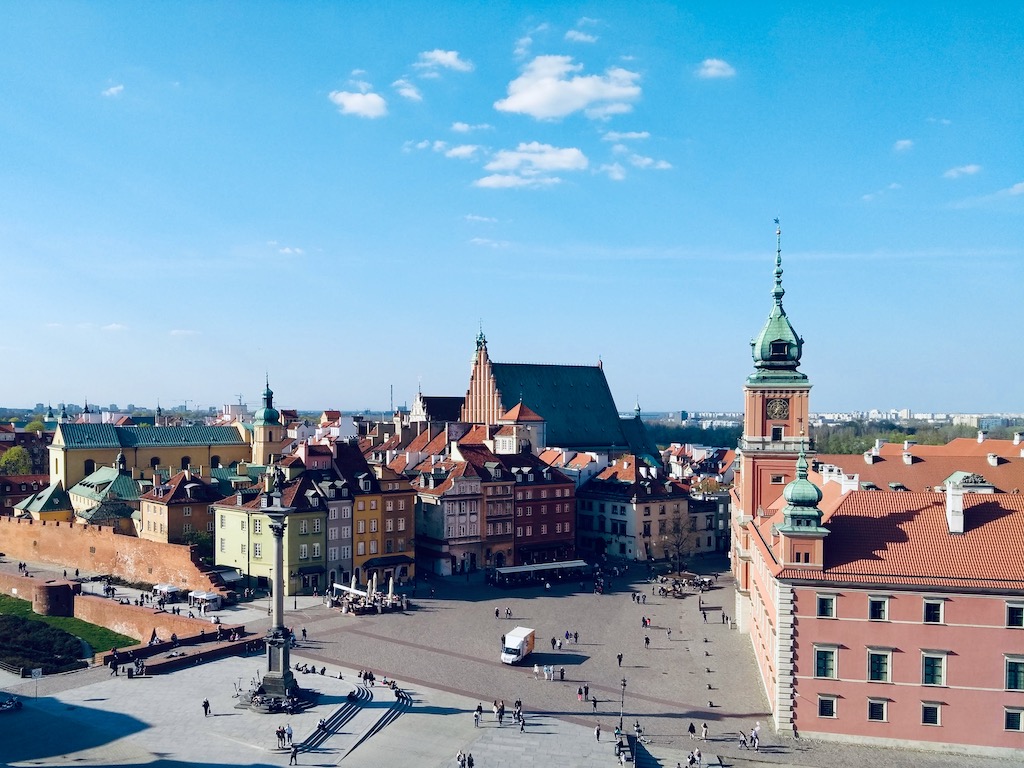

Warsaw, Poland’s capital, is the largest city in the country, with about 1.8 million inhabitants. UNESCO recognizes the historical center of Warsaw as a World Heritage Site.
The city’s history is tragic — it is a succession of invasions, wars, and administrative restrictions. But we discovered the resilience of these people who, despite the tragedies, stand up with pride.
The city was nicknamed “The Phoenix City” because it rose from the ashes after German air raids had destroyed 84% of its buildings in September 1939. Another tragic episode that cannot be ignored when talking about Warsaw is the story of its ghetto.
For this reason, we decided to register for two guided tours. The “free walking tours” offer different visits. The first one was about The history of Warsaw’s Jewish community and the second one on discovering its old city.
Warsaw Old Town Tour
The meeting point was in front of the famous Zygmunt III Column, Royal Castle Square, one of Poland’s most famous monuments.
Our guide started the visit by telling us about the reconstruction of Warsaw.
After the war, the inhabitants’ determination and the support of the nation enabled the old city’s meticulous reconstruction. The priority was to guarantee the Jewish testimony’s survival, ensure the preservation of the city’s beauty, and create a pleasant place to live.
This project was given to art historians, architects, and curators who drew inspiration from archival documents and images to restore the 18th-Century town. They have kept all the intact structures like the network of streets, the location of the squares, and the circuit of the wall. It is surreal when you walk around the market square knowing that it is in the same place as it was in the Middle Ages.
Churches and palaces were rebuilt according to historical architecture. The craftsmen even used the techniques of yesteryear to make the ornaments of these buildings. That is what makes Warsaw today such a charming city.
The reconstruction ended in 1960 with the completion of the Royal Castle and had since become, for Warsaw, the symbol of an invincible city.
The Royal Castle and the Zygmunt III Column
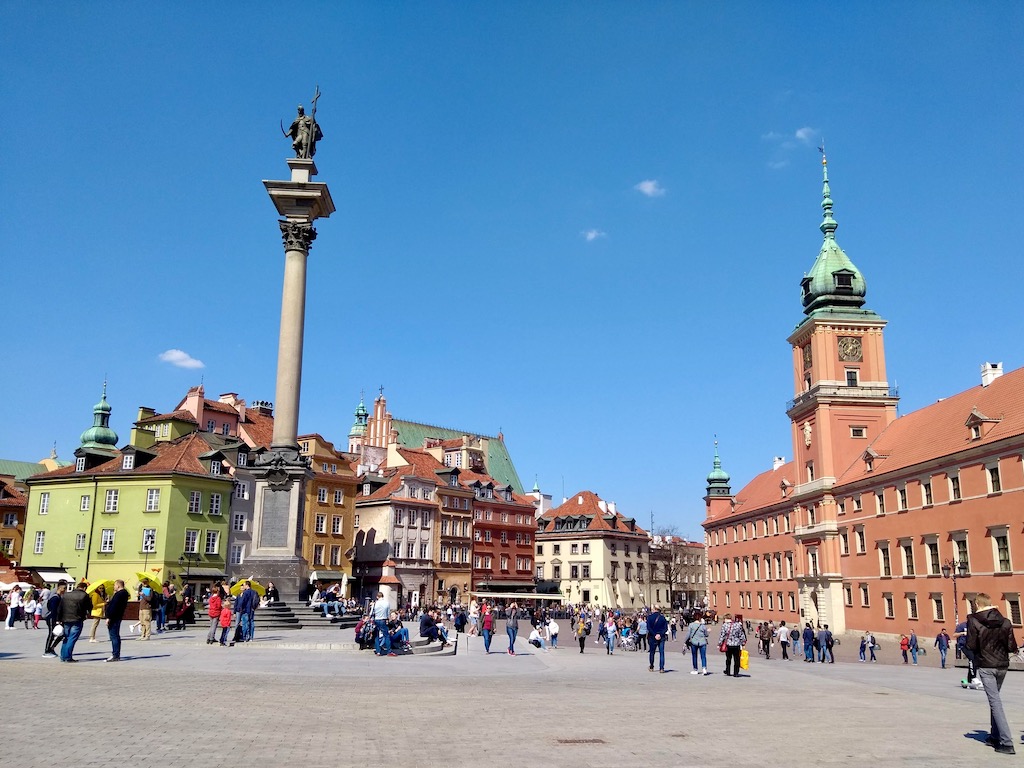

Zygmunt III Column
We headed to the foot of the statue.
It was erected in honor of King Zygmunt III, who, in 1856, transferred the capital from Kraków to Warsaw. The city was then the capital of the Polish-Lithuanian Commonwealth.
Twenty-two meters tall and decorated with four eagles, it bears the king dressed in archaic armor, holding a cross in one hand and his sword in the other.
The Royal Castle
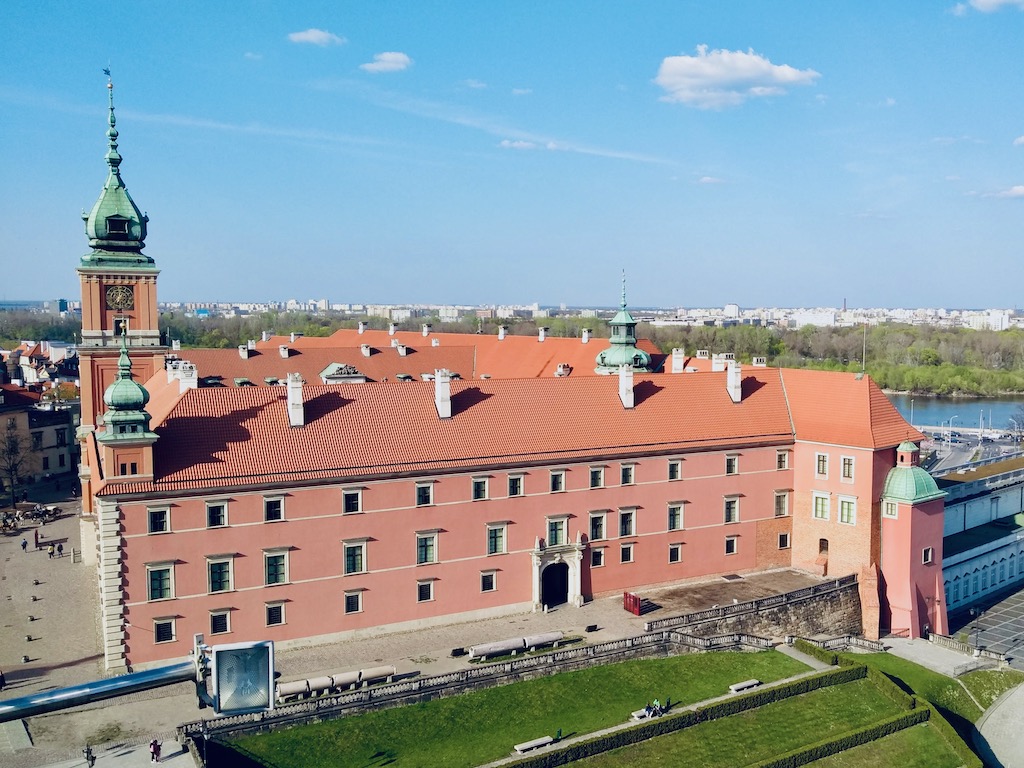

The Royal Castle was the official residence of the Polish kings in Warsaw.
Its construction began in the 16th Century with the large tower called “Tower of the Court of Justice” and continued until the 17th Century.
But its history doesn’t end there…
Destroyed during the war against Sweden, it was rebuilt in the 18th Century and housed the royal apartments and administration offices.
It was damaged during the bombing of the siege of Warsaw in 1939, suffered severe damage during the 1944 ghetto uprising, and was finally completely demolished by the Germans in September 1944.
The castle was rebuilt yet again in 1970 and opened to the public in 1984.
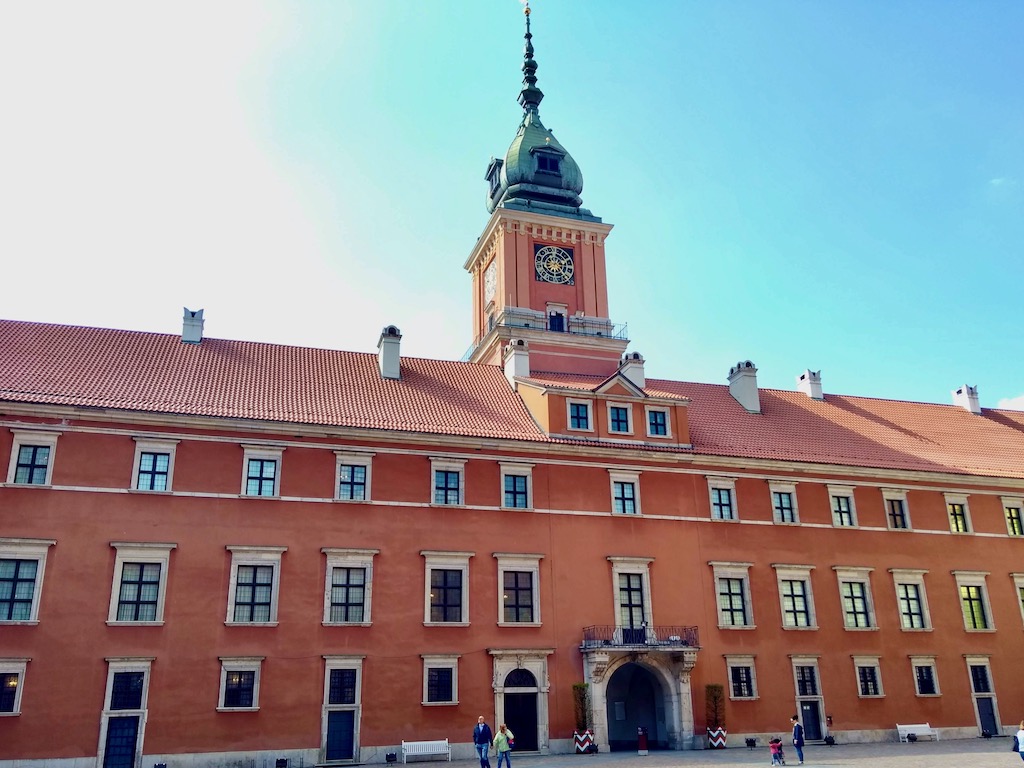

The interior has many rooms, all beautifully restored, including the royal apartments. You can admire all the works of art saved during the war and put back in their original locations.
Warsaw’s National Museum also uses it for official ceremonies and to house temporary art exhibitions.
We could have visited the castle, but we arrived too late and didn’t have enough time.
Saint-Anne Church and its gazebo
Another magnificent monument on the square, the Saint Anne Church.
Built in the 15th Century, it is one of the oldest churches in Warsaw.
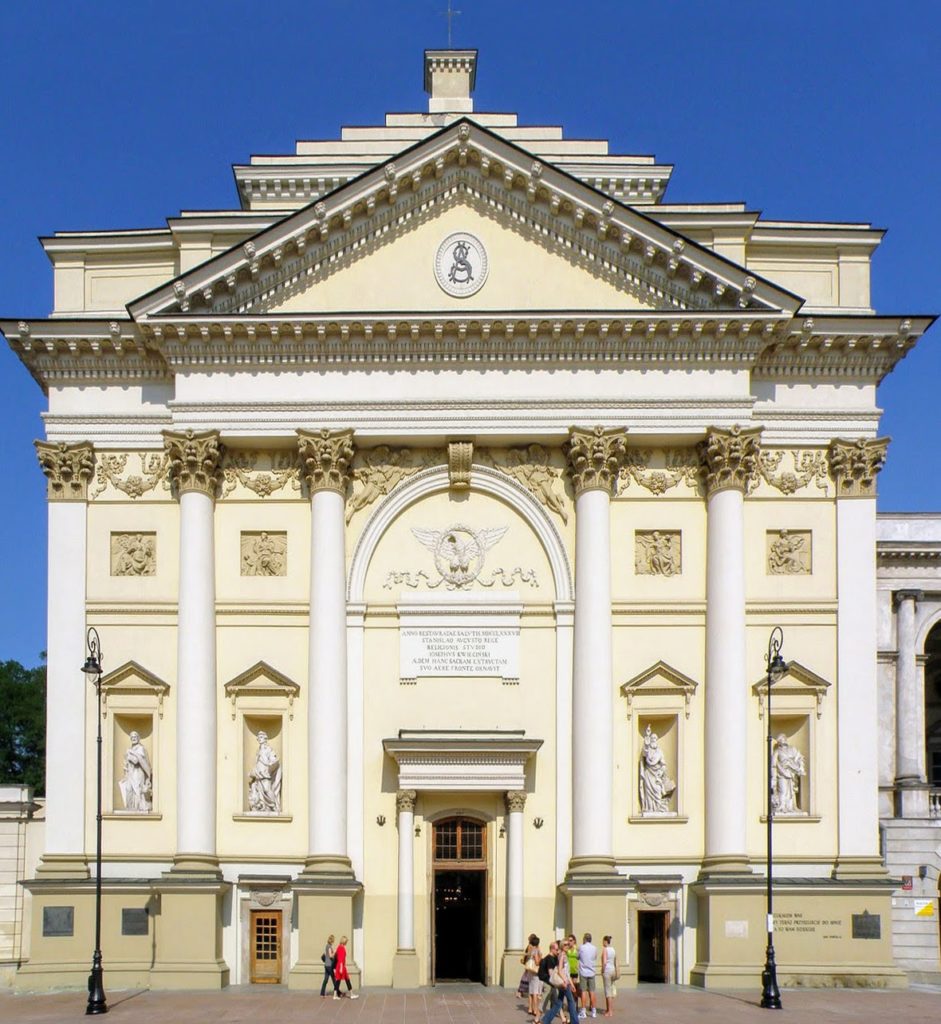

Its Gothic facade contrasts with its Baroque interior.
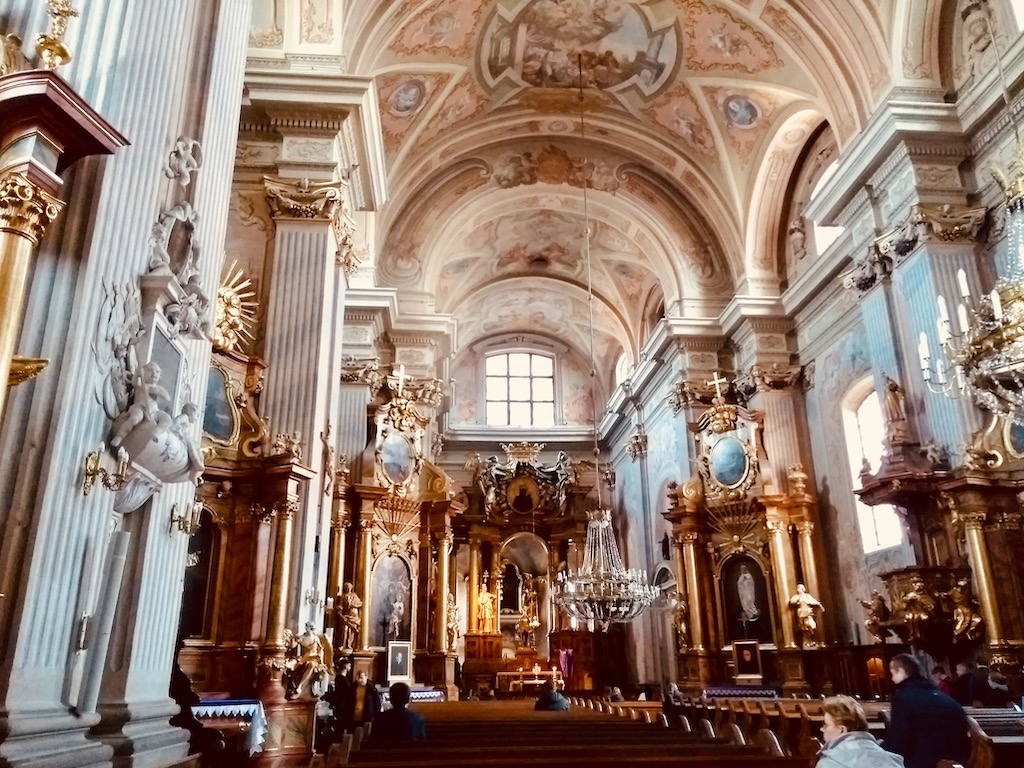

Although the current structure dates from 1770, some elements such as the organ, the pulpit, and the high altar are original.
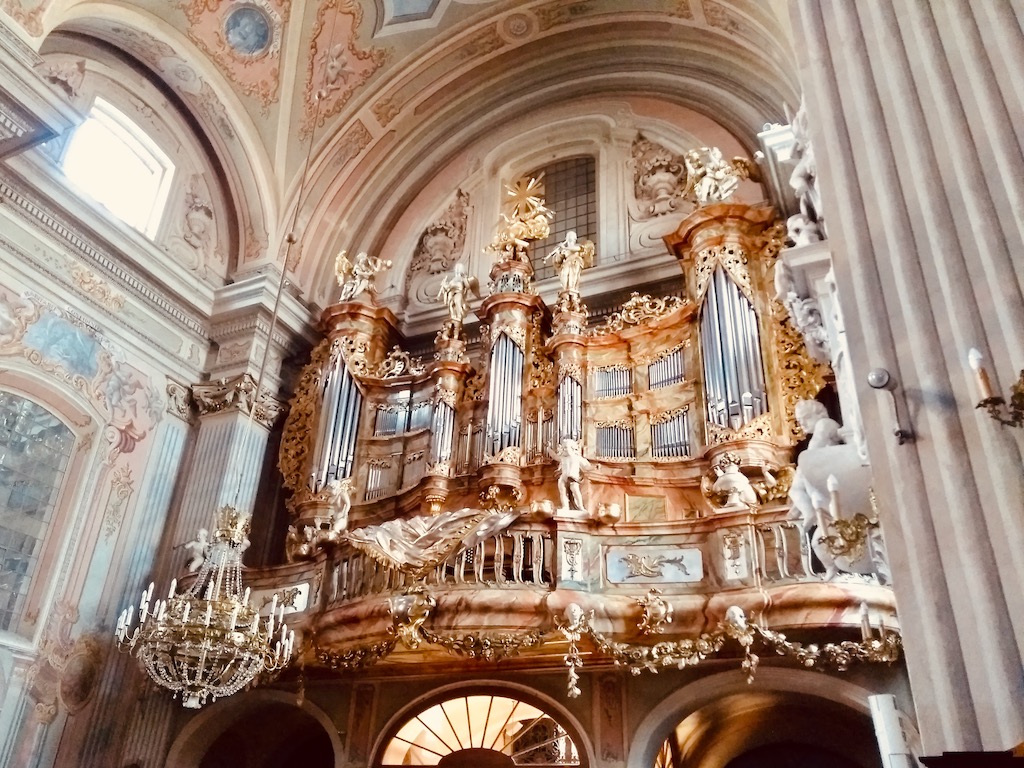

The gazebo of Saint Anne Church
As our guide pointed out, there is no bell tower in the church. For this reason, they built an independent tower, the “Taras Widokowy,” in the 16th Century.
Our guide told us that it offers one of the most beautiful views of Warsaw’s historical center! Unfortunately, the tour did not include its visit.
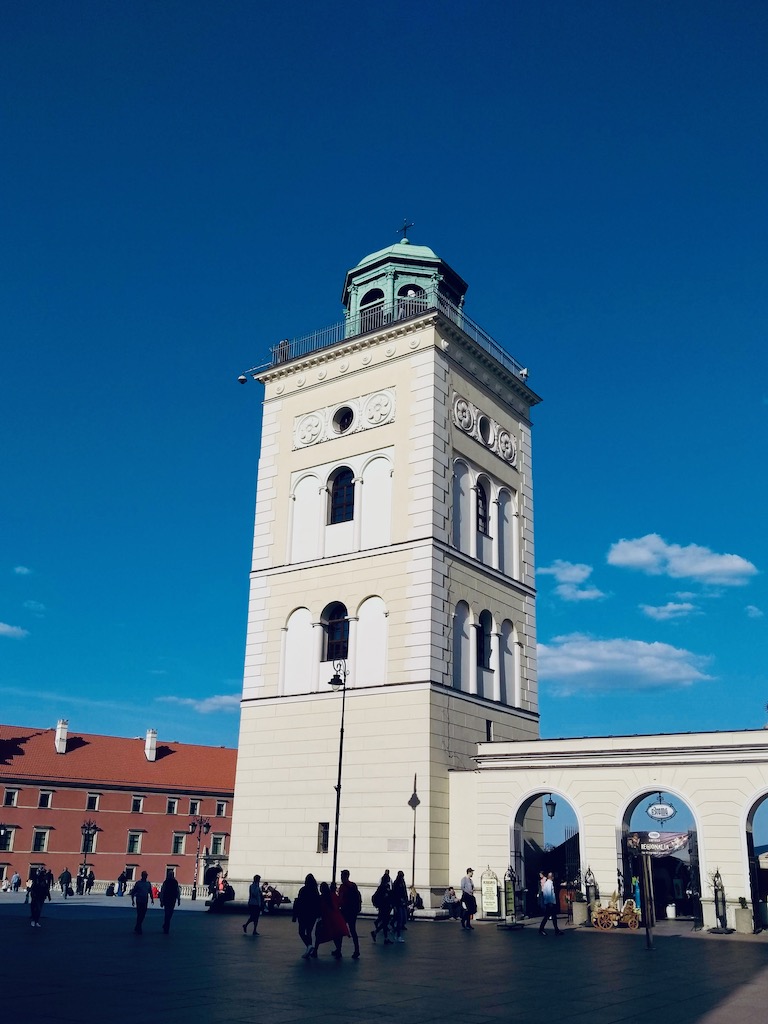

We wanted to see it for ourselves, so we came back right after the tour. Frankly, he was right — the panoramic view was breathtaking. The climb of the stairs was not that hard, it’s definitely worth a visit!
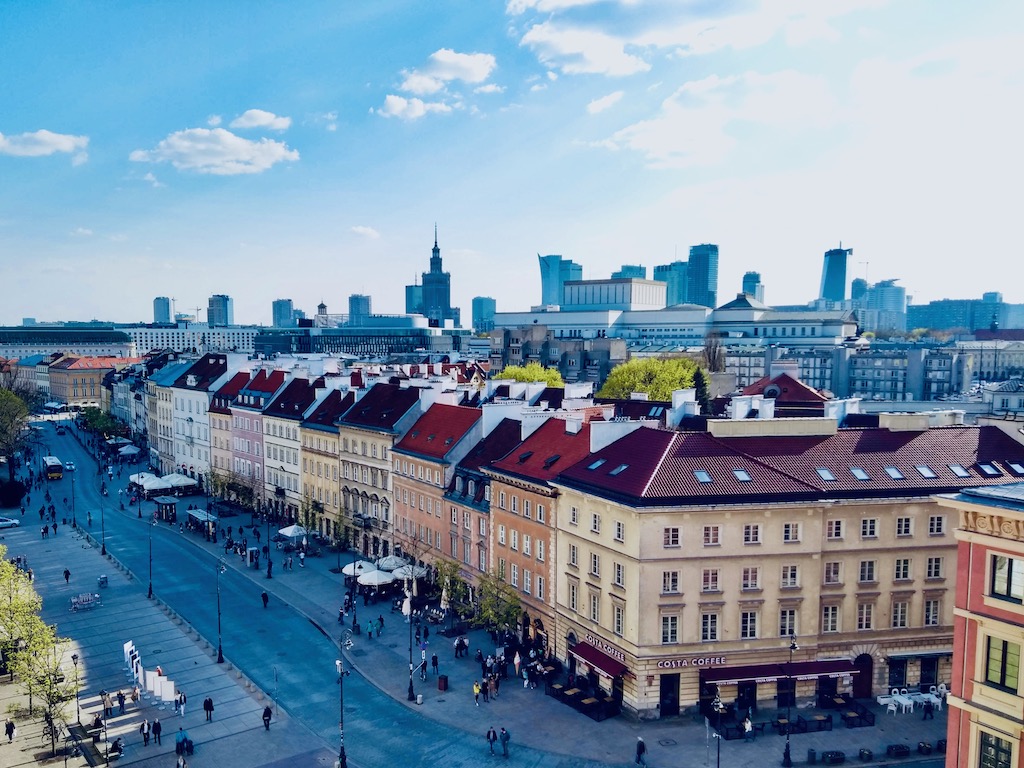

We left the Royal Square in the direction of the Old Town Market Square. The weather was pleasant, and even if the temperature was a bit cool in April, we wandered around the city with delight.
We took the time to admire the monuments, each as beautiful as the other.
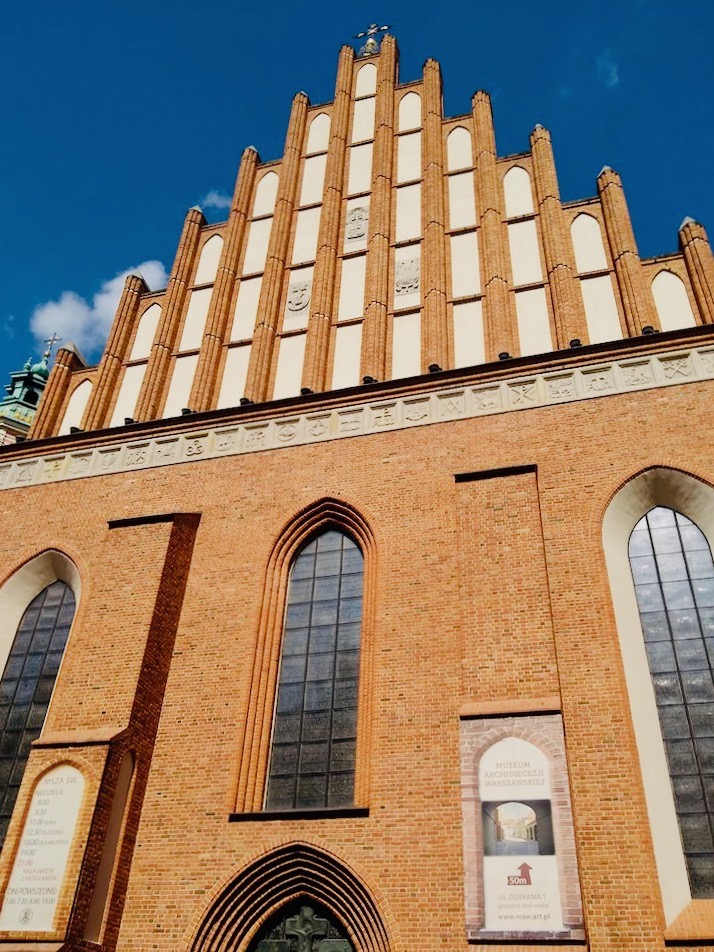

We stopped for a moment in front of Saint John Cathedral. This Roman Catholic church built during the 14th Century in Masovian Gothic style was the place of coronations and burials of many dukes of Masovia.
Duchy of Masovia is a geographic and historical region located in central and north eastern Poland.
We continued our visit to “Ulica Piwna”, literally “Beer Street”.
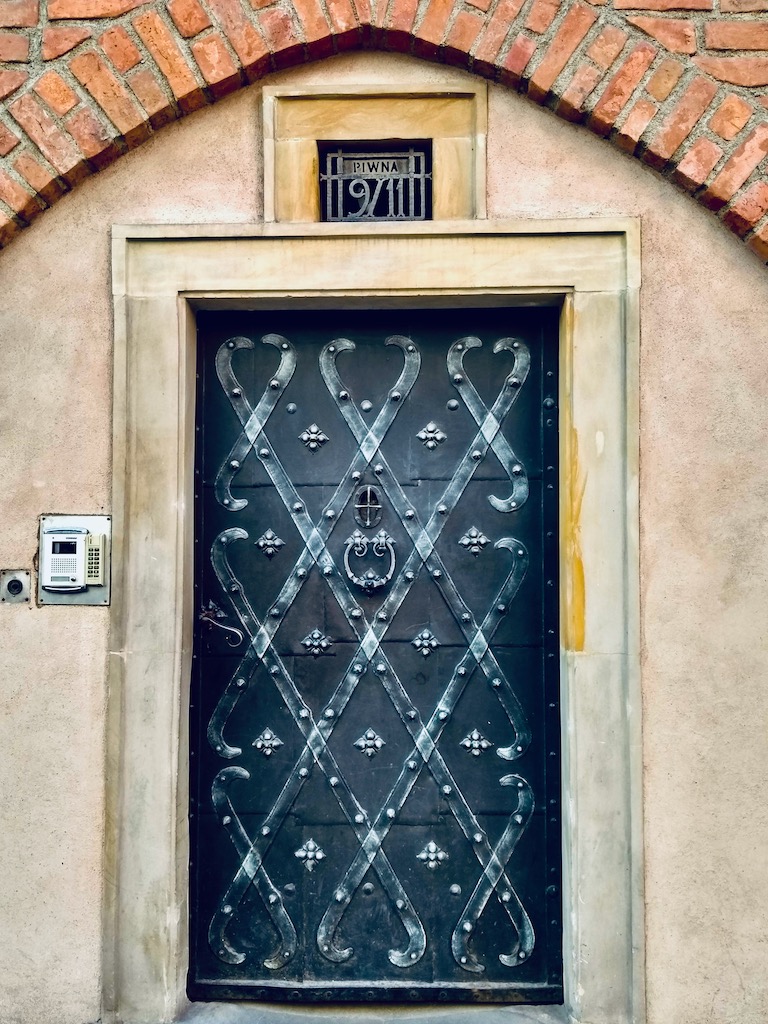

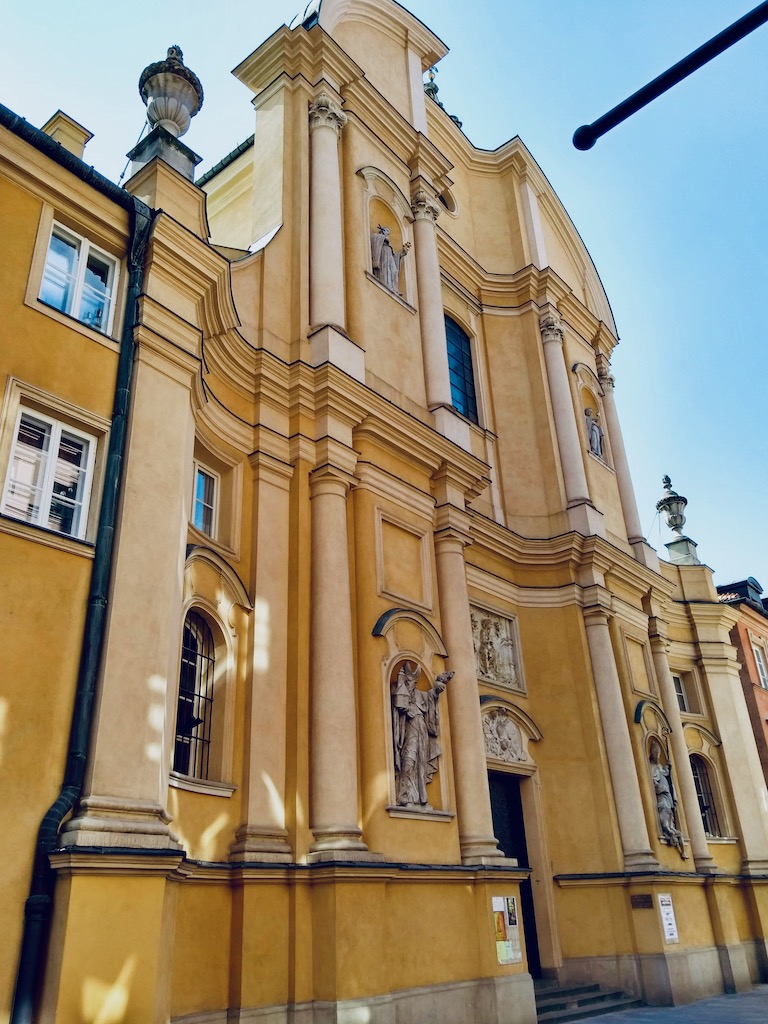

We crossed a pretty colorful interior courtyard, Canon Square, and were surprised to find a 17th-century bronze bell standing in its center.
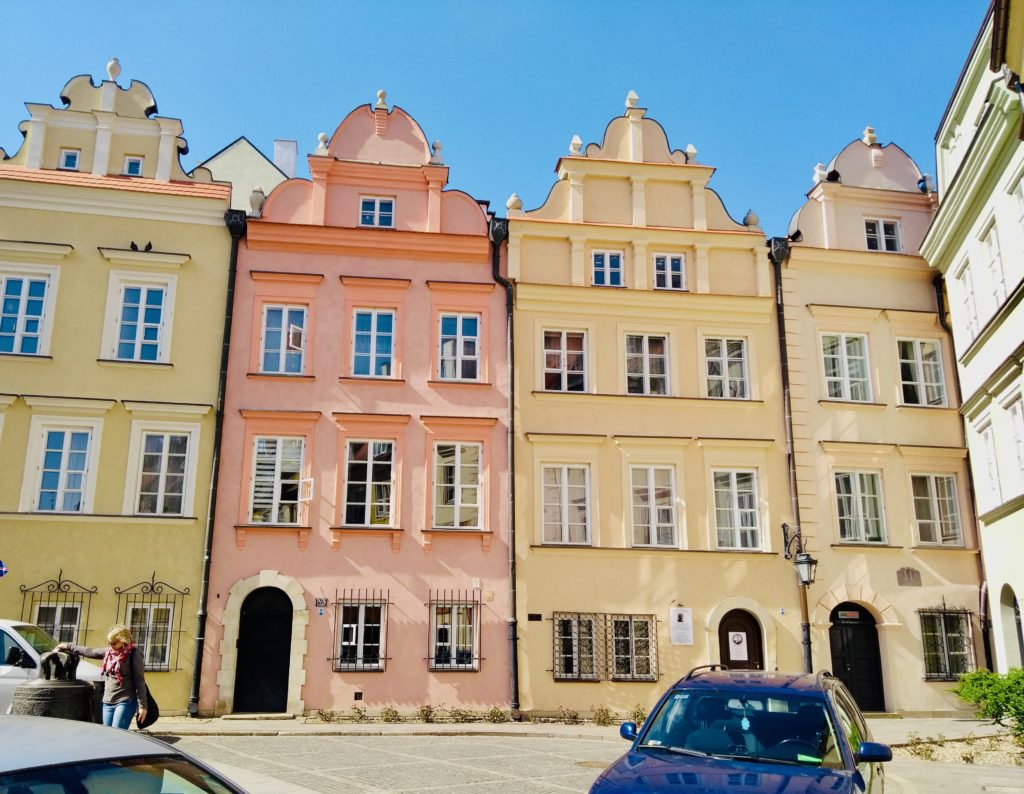

The legend has it that if you make a wish and jump on one foot around the bell, your wish will come true!
You’ll never know if I did it …
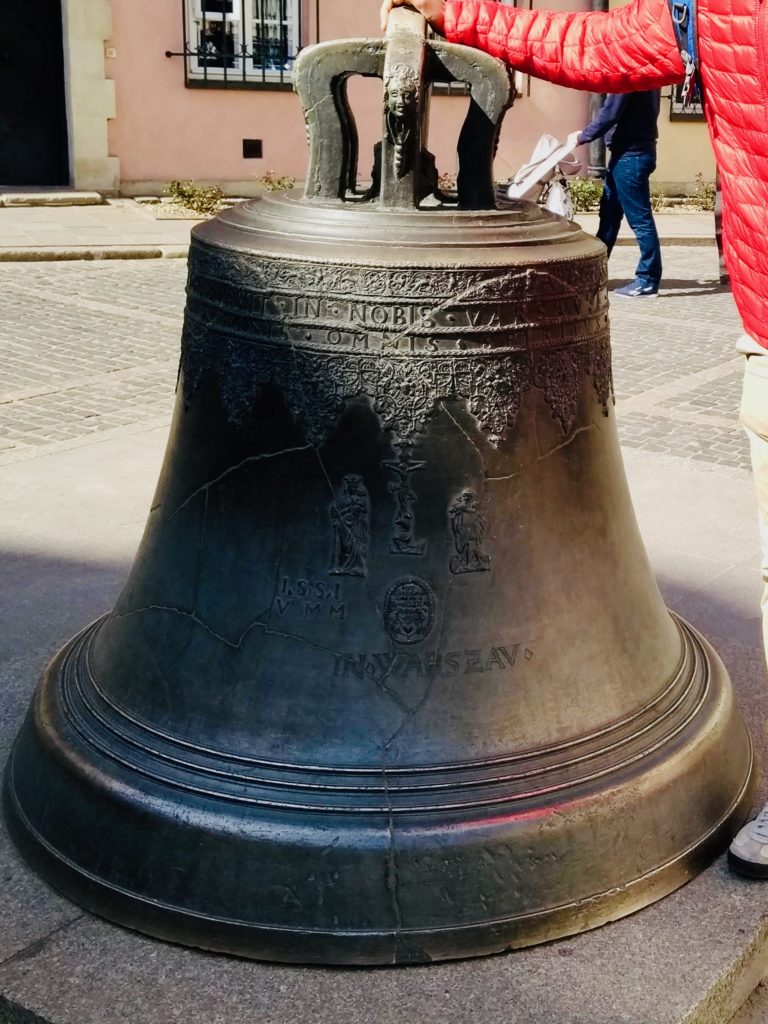

Warsaw Market Square, Rynek Starego Miasta
This square is the center and the oldest part of the old town.
The current houses were rebuilt between 1948 and 1953 in the 17th-Century style as when wealthy merchant families lived here.
For the reconstruction, Poland, which was under Russian occupation, was instructed to build square buildings without frills. The facades had already been rebuilt when the Russian government realized that their recommendations weren’t followed. Unable to request another demolition, they imposed that each house’s interior be made of identical square rooms.
I cannot imagine what the place would have been if Russia had its way. Today, everything is so colorful and beautiful! The painted and decorated facades give all their splendor to the place.
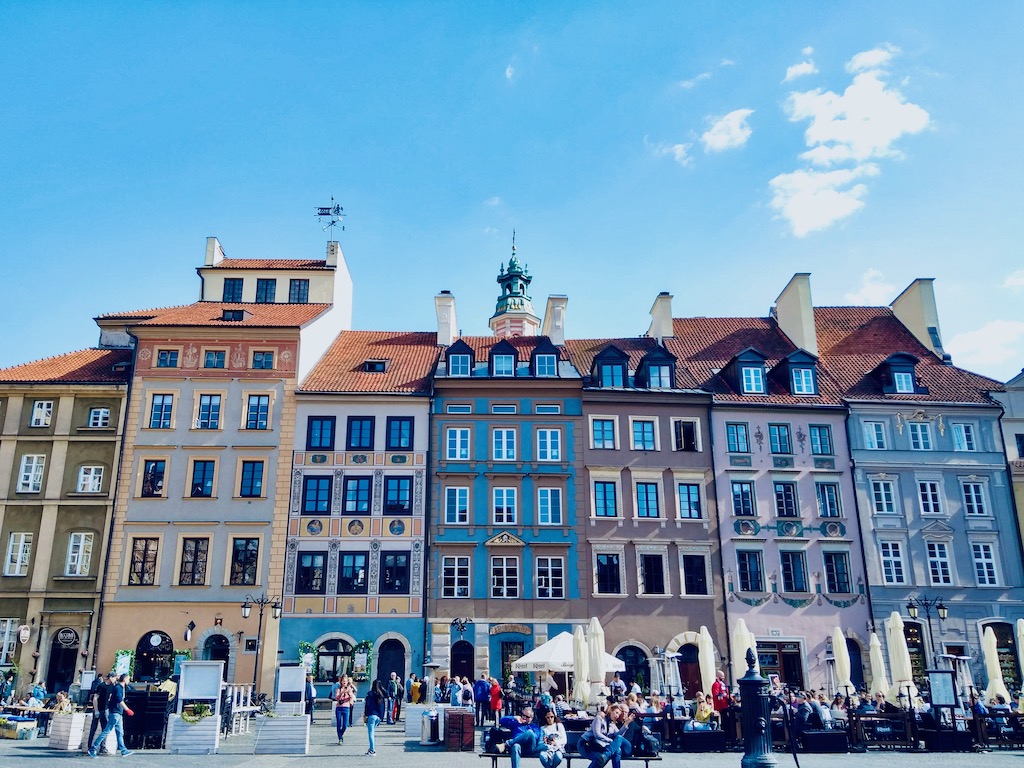

They named each side of this vast square after 17th-century Polish parliamentarians. Dekert (Strona Dekerta), Barss (Stona Barssa), Kołłątaj (Strona Hugo Kołłątaja) and Zakrzewski (Strona Zakrzewskiego).
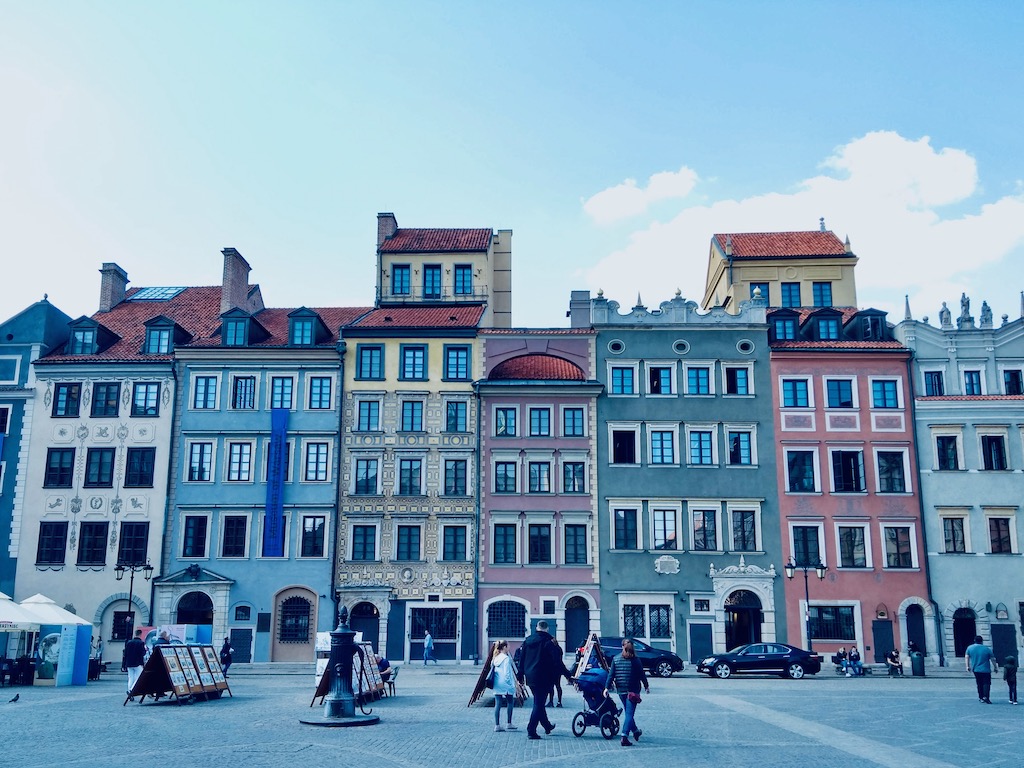

The top floor is not habitable. The windows under the roof are used to create skylights in the apartments.
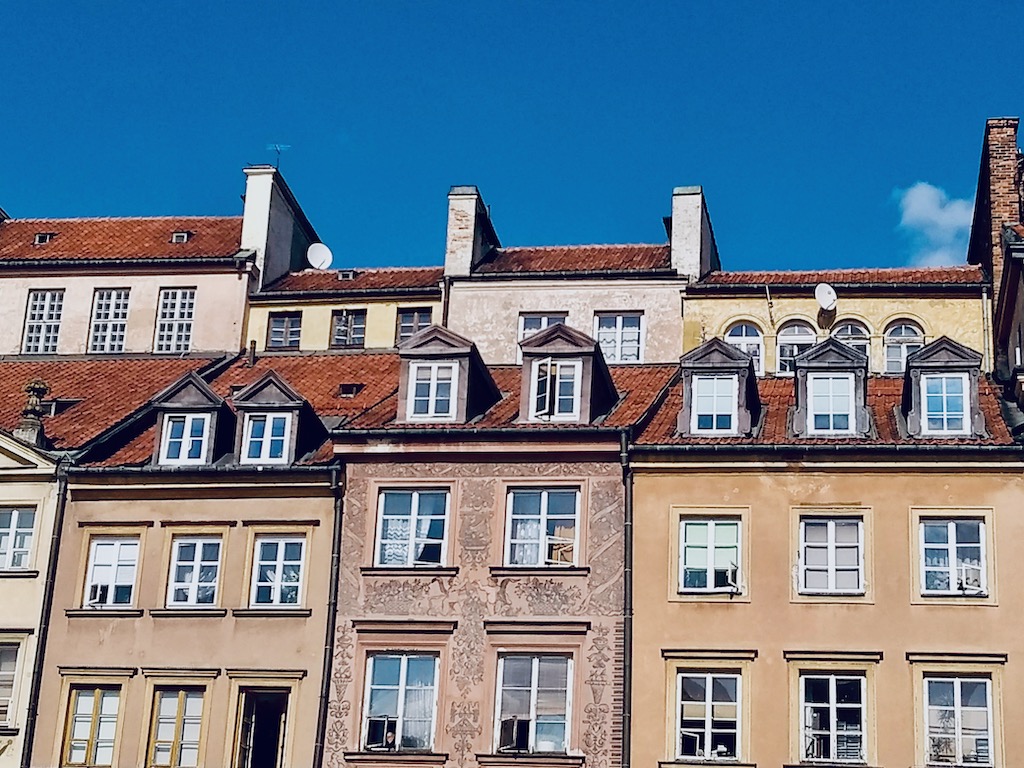

In the center of the square stands a bronze statue of The Warsaw Mermaid. It has been the symbol of Warsaw since 1855 and is located on the city’s coat of arms.
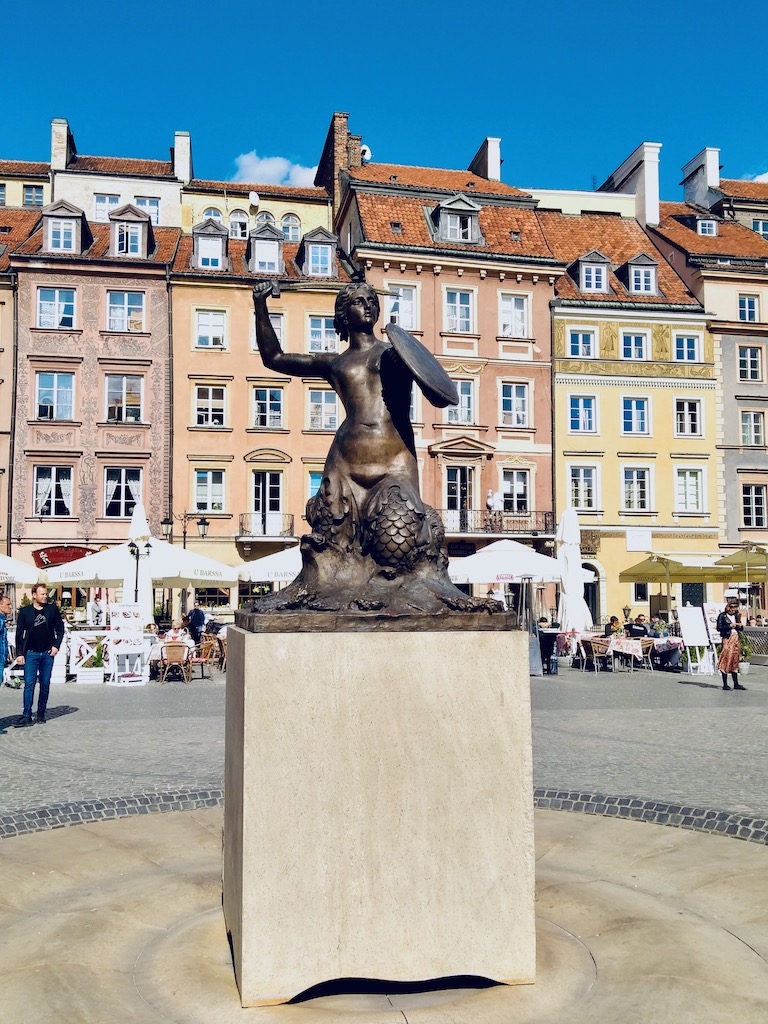

Of course, it has its legend 😊
One day, a little mermaid stopped on the bank of the river. Finding the surroundings beautiful, she decided to make it her home. She was tangling the nets and releasing the fish caught by the fishermen, causing waves. They spotted the “animal” and set off to capture it. Along the way, they heard the siren singing, and, of course, fell in love with her.
However, a wealthy merchant managed to trap the siren and imprisoned her. Hearing her cries, the fishermen went to save her.
Since then, to repay them, the siren armed with a sword and a shield has helped protect the city and its inhabitants.
Some say that the Little Copenhagen Mermaid is the Warsaw Mermaid’s sister and that they separated in the Baltic Sea.
Before leaving the Market Square to go to the Barbican on the ramparts, we promised ourselves to come back here to appreciate the place with a delicious meal!
The Barbican, the crossing point
The Barbican is a gateway through the ramparts that were built to protect the northern access to Warsaw. They were erected during the Middle Ages, but they became obsolete almost immediately with artillery’s appearance.
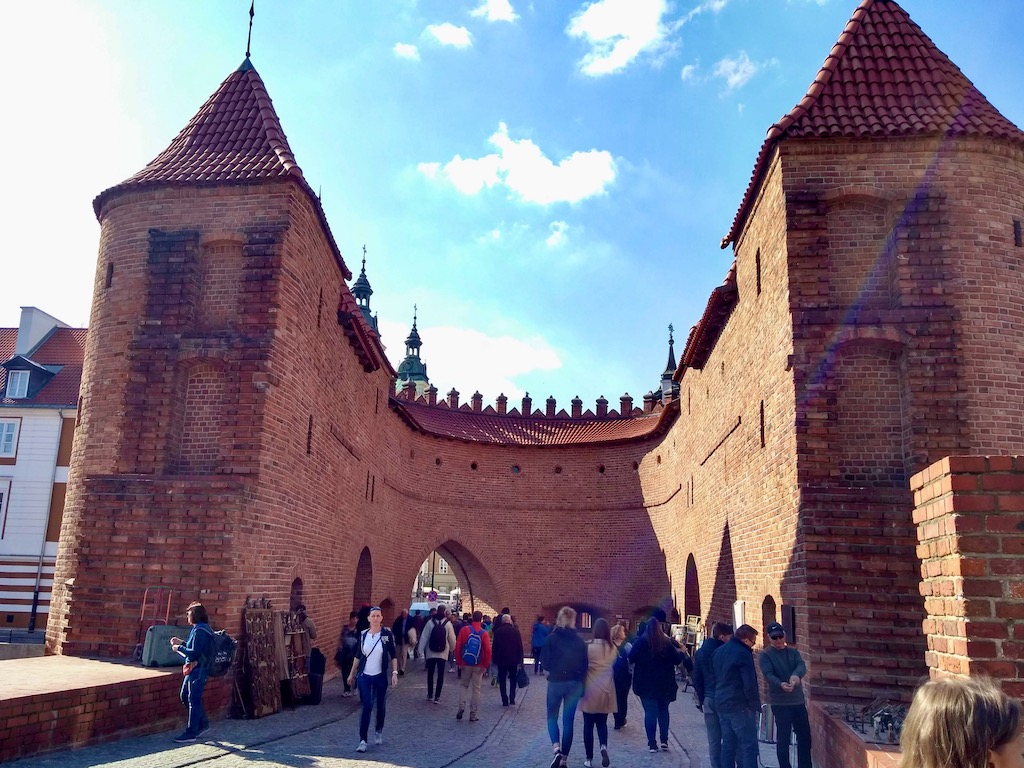

Since the army used it only once for the city’s defense during the Swedish invasion in 1656, it was dismantled in the 18th Century. Then, it was rebuilt in 1938.
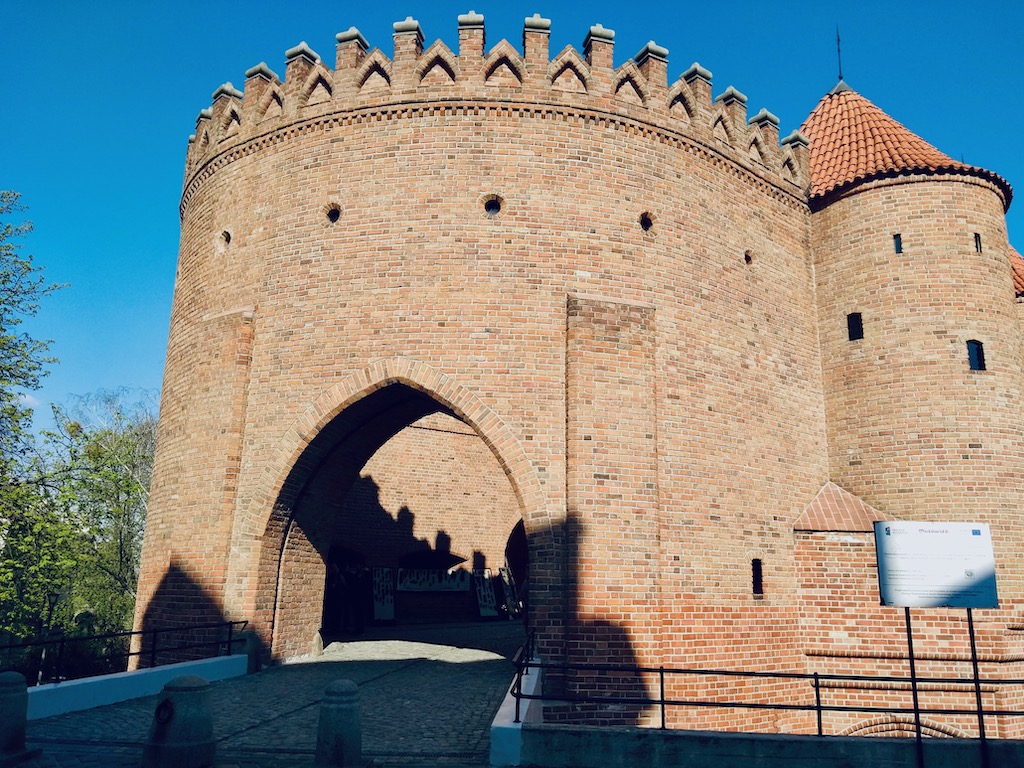

Regrettably, during the war, it was wiped out again and rebuilt just like the ramparts simultaneously as the old town.t again and rebuilt just like the ramparts simultaneously as the old town.
The ramparts of Warsaw
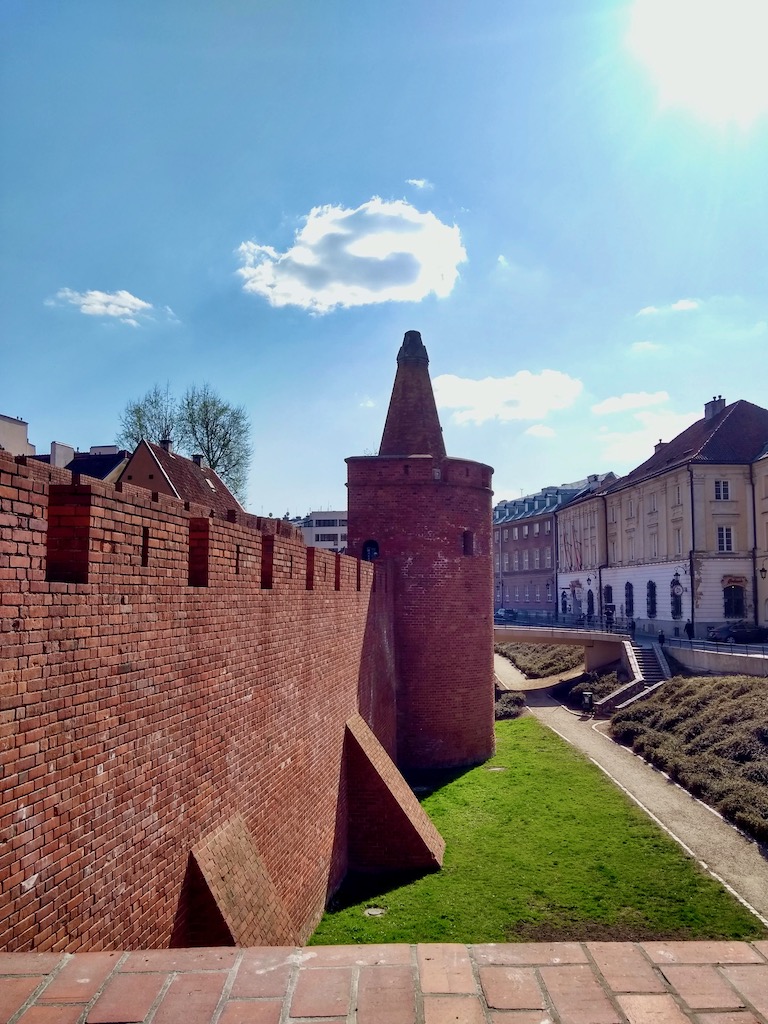

We walked on the ramparts, passed through the barbican, and arrived in the neighborhood that witnessed Marie Curie‘s birth.
It’s impossible to visit Warsaw without speaking of its illustrious scientist.
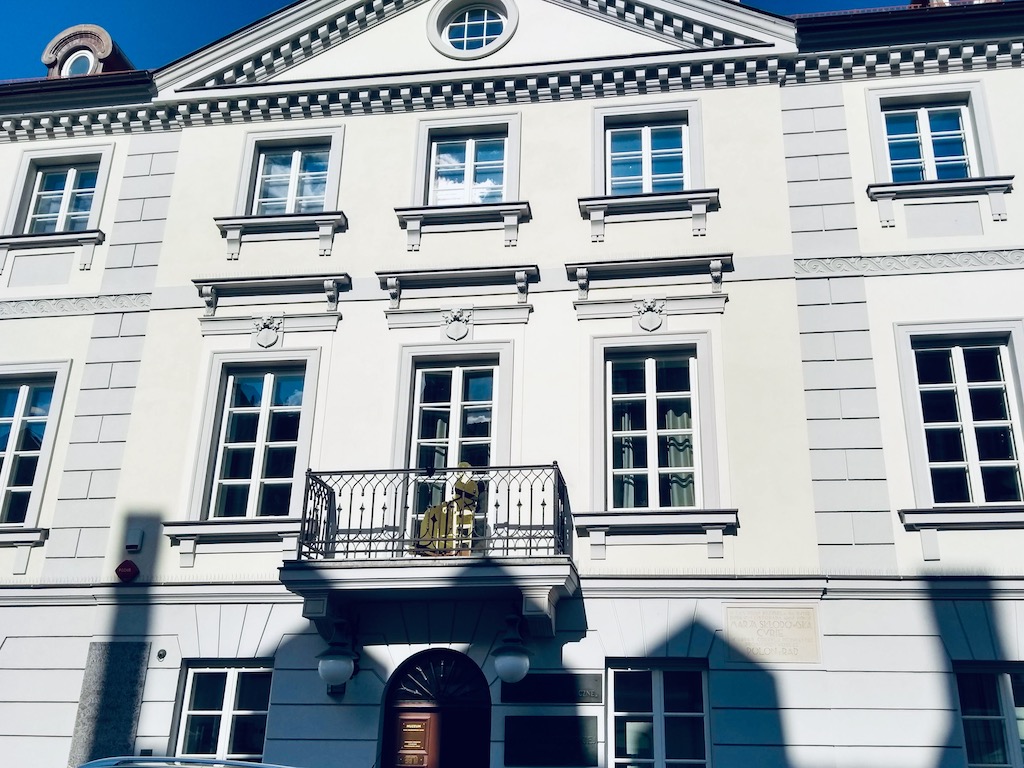

Our guide was proud to tell us about her and summarised the multiple awards she has won for her work.
Maria Salomea Skłodowska (November 7, 1867 – July 4, 1934)
This naturalized-French Polish physicist and chemist had carried out pioneering research on radioactivity. She was the first woman to receive a Nobel Prize, the first and only one to win it twice, and the sole person to have won in two diverse scientific fields.
She was part of the Curie family’s legacy of five Nobel Prize winners and is, on top of that, the first female to become a professor at the University of Paris.
In 1995, Marie Curie became the first woman to be buried on her own merits at the Pantheon in Paris.
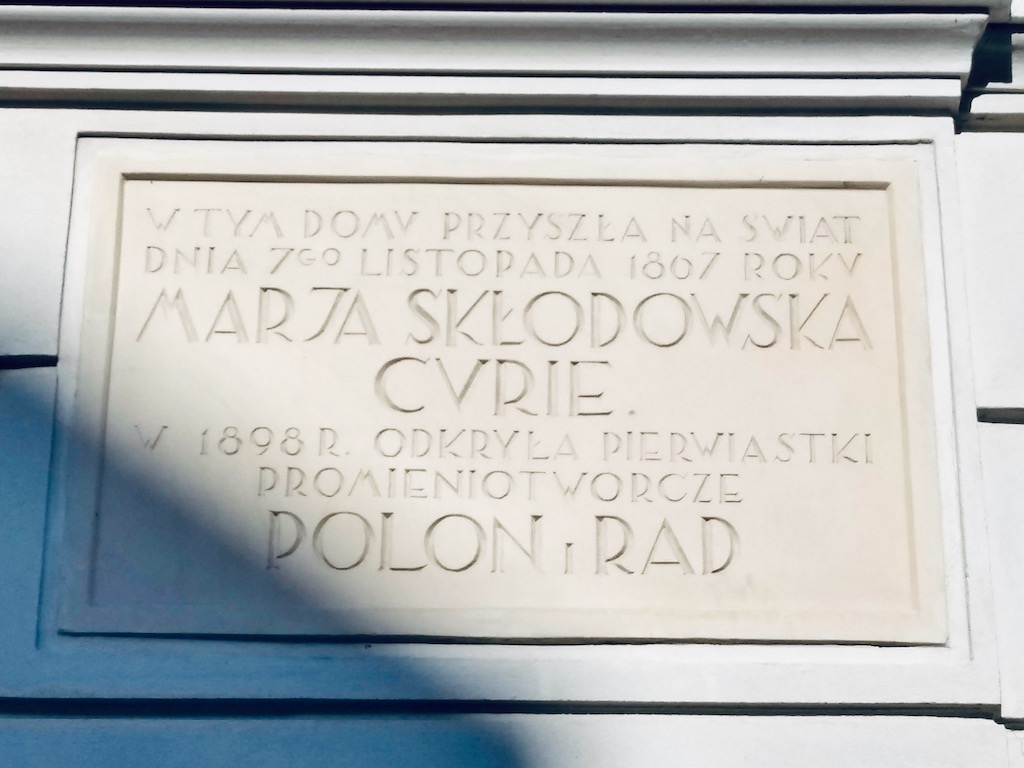

I admit that there is really something to be proud of!
Our visit came to an end, and we returned to our starting point. Our last stop was in front of the Warsaw Supreme Court building, Krasiński Square.
The 1944 Warsaw Uprising Monument
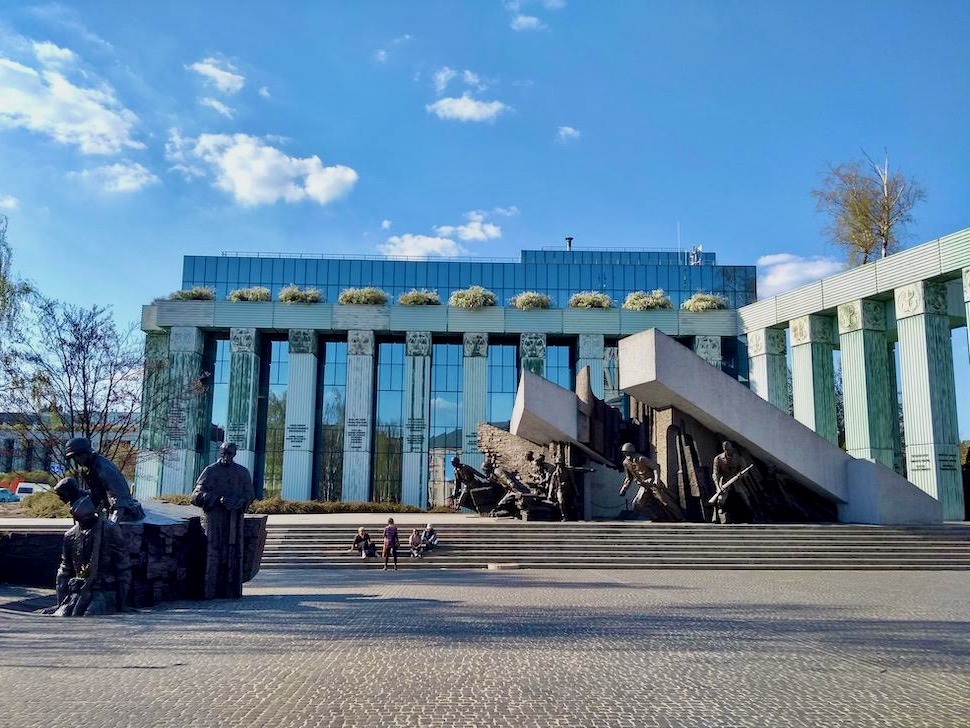

Unveiled in 1989, the monument was sculpted by Wincenty Kućma and created by architect Jacek Budyn.
It is described as “the most important monument in post-war Warsaw.”
Made of bronze, 10 meters (33 feet) high, it’s made up of two parts.
The largest, elevated, presents a group of insurgents fighting, while the smallest shows rebels into a maintenance hole. It is a reminder of the use of Warsaw’s sewer system by the insurgents during the uprising.
Opposite the monument, at the intersection of Długa and Miodowa streets, a plaque was placed on two utility holes that have indeed been used.
Our visit was over. We thanked our guide and headed as promised to discover the restaurants in Market Square. 😃
On our way back to the hotel, this huge building lit in red appeared in front of us.
The modern Warsaw after the historic Warsaw in which we spent our afternoon.
The Palace of Culture and Science. Pałac Kultury i Nauki. Abbreviated PKiN.
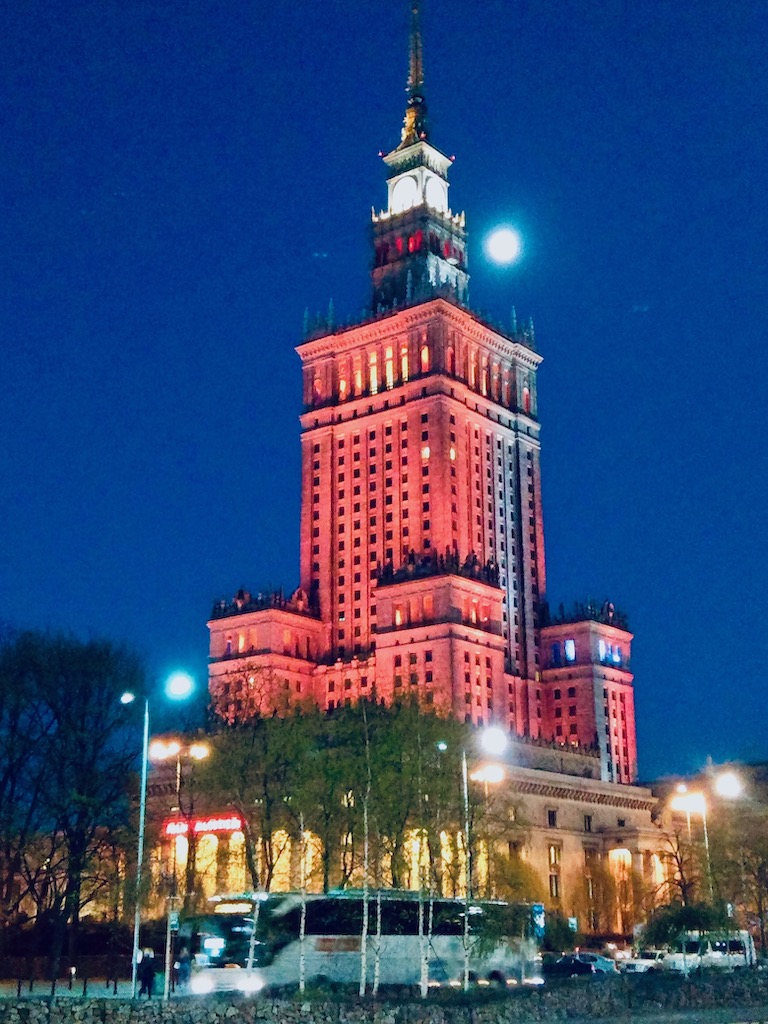

Its total height of 237 meters (778 feet) that included the spire, makes it the highest building in Poland, the 5th tallest construction in the EU, and one of the tallest on the European continent.
The Palace of Culture was built in 1955 and houses cinemas, theaters, libraries, sports clubs, university faculties, and the Polish Academy of Sciences authorities.
Since 2007, it has been registered in the Register of Cultural Heritage Objects.
Final word
Warsaw is a mixture of different kinds of architecture and styles. In the street, one can pass massive pre-war buildings and end up in the colorful old city. At a turn of the road, one can arrive in front of a typical communist architectural construction and, further on the way, be stunned by modern skyscrapers made of glass. It is an incredible city to discover! The city gives a feeling of strength and shows a willingness always to go ahead. It, for me, represents the character of Polish people.



Warsaw looks amazing on a nice day! I visited over a weekend in the middle of winter and it was cold, snowy and dark haha. What a difference the warmth makes!
Did you make it to the Warsaw uprising museum?? It was fantastic!
Poland is indeed a very cold country in winter. With lots of snow! 😊 We were lucky to enjoy good weather even if in April we still needed a good jacket. Unfortunately, we didn’t have time for the Warsaw uprising museum. It’s one of the regrets I have from this visit.
I really under appreciated Warsaw when I visited 15 years ago. It looks stunning. Here’s my reference for when I return.
I didn’t expect such a beautiful city when I went to Warsaw. And the way Polish people rebuilt it makes the town even more attractive!